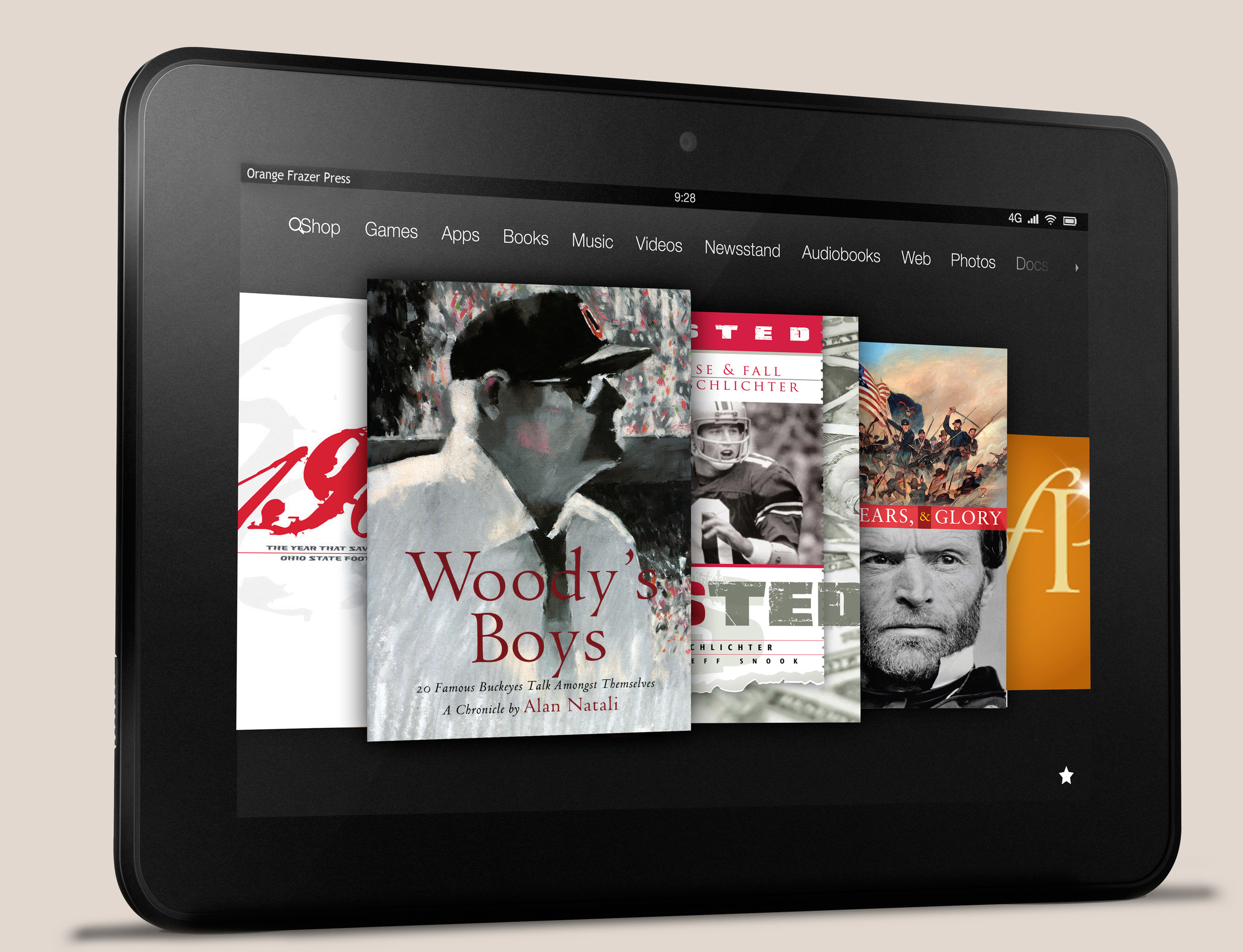The Rise of E-books and the Resilience of Print Books: Orange Frazer Press in the Digital Age
E-books and e-book publishing have certainly taken over the airwaves lately as publishers ramp up digital offerings and consumers invest in top-of-the-line e-readers and tablets. If you are in an author or publisher circle, you’ve certainly heard about disputes over preferred e-book formats (many publishers are now trying to move to EPUB3, a free and open digital publishing standard created by the International Digital Publishing Forum), the struggle between libraries and the Big Six publishers (soon to be the Big Five when the merger of Penguin and Random House is finalized) over e-book rights and distribution, and the Supreme Court ruling in favor of Amazon’s steep e-book discounts (labeling the agency model as publisher-collusion and price-fixing).
No matter your stake in the game, or your knowledge of the legal semantics, we can all agree that e-books have totally revolutionized the ways that publishers, libraries, booksellers, and consumers operate within a reading landscape. Dominique Raccah, founder and CEO of Sourcebooks says that we are now “at the transformation of the book,” and while it may or may not be a “tipping point,” we are “now at that moment in the history of the book.” Never before has the act of reading and the medium of the book been so altered, and never before has an evolving market thrown publishers into full-panic mode.
And yet, it is also true that e-books are encouraging more people to read. Research conducted last year by the Pew Internet Research and American Life Project reported that a typical e-book reader read twenty-four books in the past year, whereas a typical non e-book reader read fifteen. Pew also found, however, that the purchase of e-books does not necessarily replace or supersede the purchase of print books. In fact, it is just the opposite: 90 % percent of e-book readers continue to read physical books. Reporting on this newer phenomenon—the cresting of e-book sales and the resilience of hardcover print sales—the Wall Street Journal writes:
“E-books, in other words, may turn out to be just another format—an even lighter-weight, more disposable paperback. That would fit with the discovery that once people start buying digital books, they don't necessarily stop buying printed ones…The two forms seem to serve different purposes.”
This, then, is the new reading landscape, one in which e-books have come to exist side-by-side with print books, where tablets have overtaken the exclusive e-reader market to affirm that no one can succeed by merely replacing the physical book, they can succeed only by supplementing it, expanding it, engaging it, and accelerating it. In fact, the only print sales that have dramatically suffered have been mass-market paperbacks.
So, in all of this digital craze, where does Orange Frazer find itself? With a foot in each stream, as always. One of the greatest benefits to being a small and entirely independent publisher is the ability to change quickly, adapt, and remain flexible. When we decided we wanted to offer some of our best-selling books on Amazon’s Kindle, it took a month of the nitty-gritty digital research and legwork, and then it was done. We didn’t have to set company-wide precedent, hold conferences with booksellers, distributors, and librarians across the country, argue over the semantics of this code or that code, this profit or that expense, we could simply act. We use EPUB3, the leading open format for e-books, and we continue to make, sell, and distribute our books via the available digital and traditional sales channels, unimpeded.
And while we’re on the subject, you might be interested in checking out our available e-book titles. This blog author had a significant hand in making Woody’s Boys, one of our all-time bestsellers, available digitally, and must say she is pretty proud of how it turned out—and her resulting Buckeye trivia knowledge.

